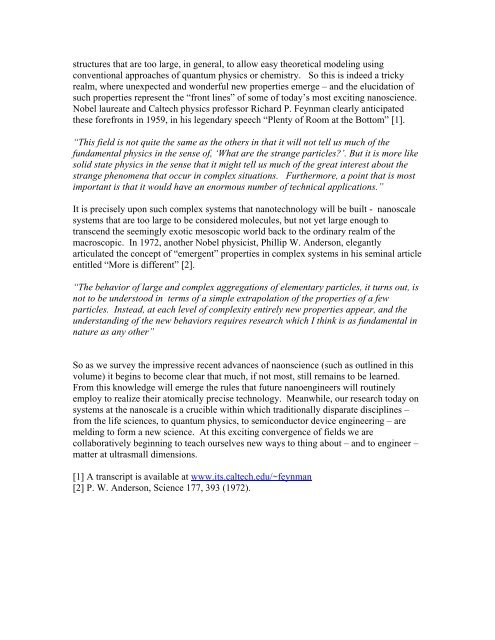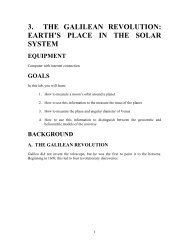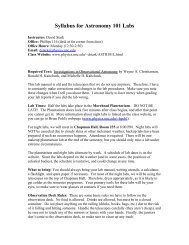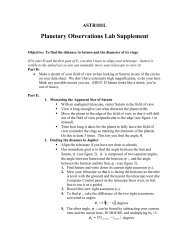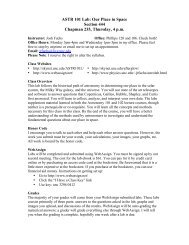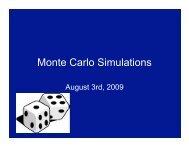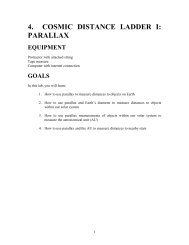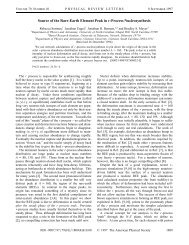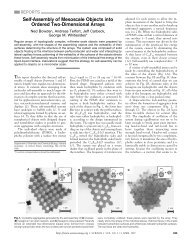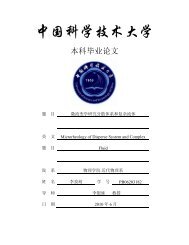Foreward: Understanding Nanotechnology. Michael L. Roukes For ...
Foreward: Understanding Nanotechnology. Michael L. Roukes For ...
Foreward: Understanding Nanotechnology. Michael L. Roukes For ...
Create successful ePaper yourself
Turn your PDF publications into a flip-book with our unique Google optimized e-Paper software.
structures that are too large, in general, to allow easy theoretical modeling using<br />
conventional approaches of quantum physics or chemistry. So this is indeed a tricky<br />
realm, where unexpected and wonderful new properties emerge – and the elucidation of<br />
such properties represent the “front lines” of some of today’s most exciting nanoscience.<br />
Nobel laureate and Caltech physics professor Richard P. Feynman clearly anticipated<br />
these forefronts in 1959, in his legendary speech “Plenty of Room at the Bottom” [1].<br />
“This field is not quite the same as the others in that it will not tell us much of the<br />
fundamental physics in the sense of, ‘What are the strange particles?’. But it is more like<br />
solid state physics in the sense that it might tell us much of the great interest about the<br />
strange phenomena that occur in complex situations. Furthermore, a point that is most<br />
important is that it would have an enormous number of technical applications.”<br />
It is precisely upon such complex systems that nanotechnology will be built - nanoscale<br />
systems that are too large to be considered molecules, but not yet large enough to<br />
transcend the seemingly exotic mesoscopic world back to the ordinary realm of the<br />
macroscopic. In 1972, another Nobel physicist, Phillip W. Anderson, elegantly<br />
articulated the concept of “emergent” properties in complex systems in his seminal article<br />
entitled “More is different” [2].<br />
“The behavior of large and complex aggregations of elementary particles, it turns out, is<br />
not to be understood in terms of a simple extrapolation of the properties of a few<br />
particles. Instead, at each level of complexity entirely new properties appear, and the<br />
understanding of the new behaviors requires research which I think is as fundamental in<br />
nature as any other”<br />
So as we survey the impressive recent advances of naonscience (such as outlined in this<br />
volume) it begins to become clear that much, if not most, still remains to be learned.<br />
From this knowledge will emerge the rules that future nanoengineers will routinely<br />
employ to realize their atomically precise technology. Meanwhile, our research today on<br />
systems at the nanoscale is a crucible within which traditionally disparate disciplines –<br />
from the life sciences, to quantum physics, to semiconductor device engineering – are<br />
melding to form a new science. At this exciting convergence of fields we are<br />
collaboratively beginning to teach ourselves new ways to thing about – and to engineer –<br />
matter at ultrasmall dimensions.<br />
[1] A transcript is available at www.its.caltech.edu/~feynman<br />
[2] P. W. Anderson, Science 177, 393 (1972).


